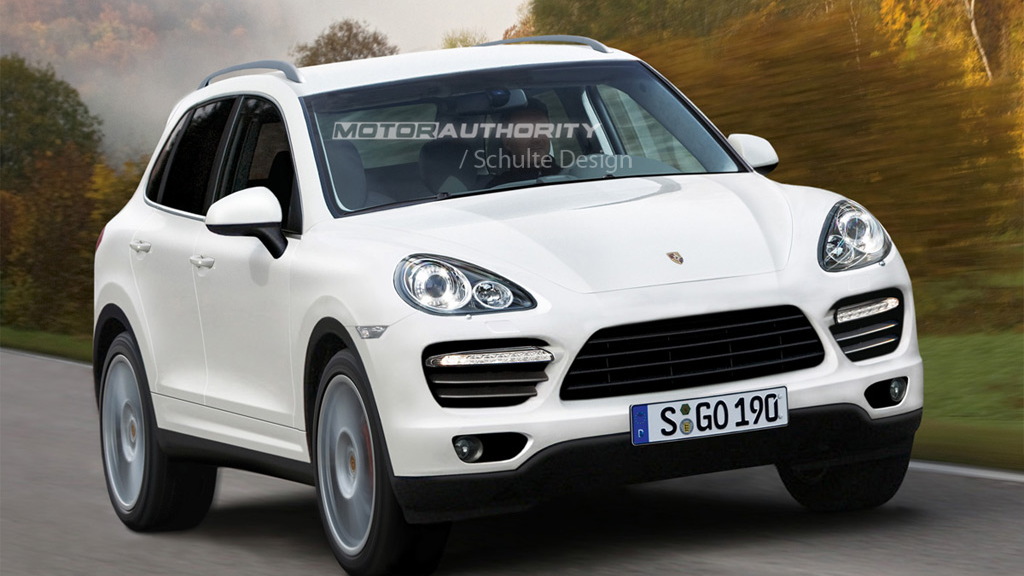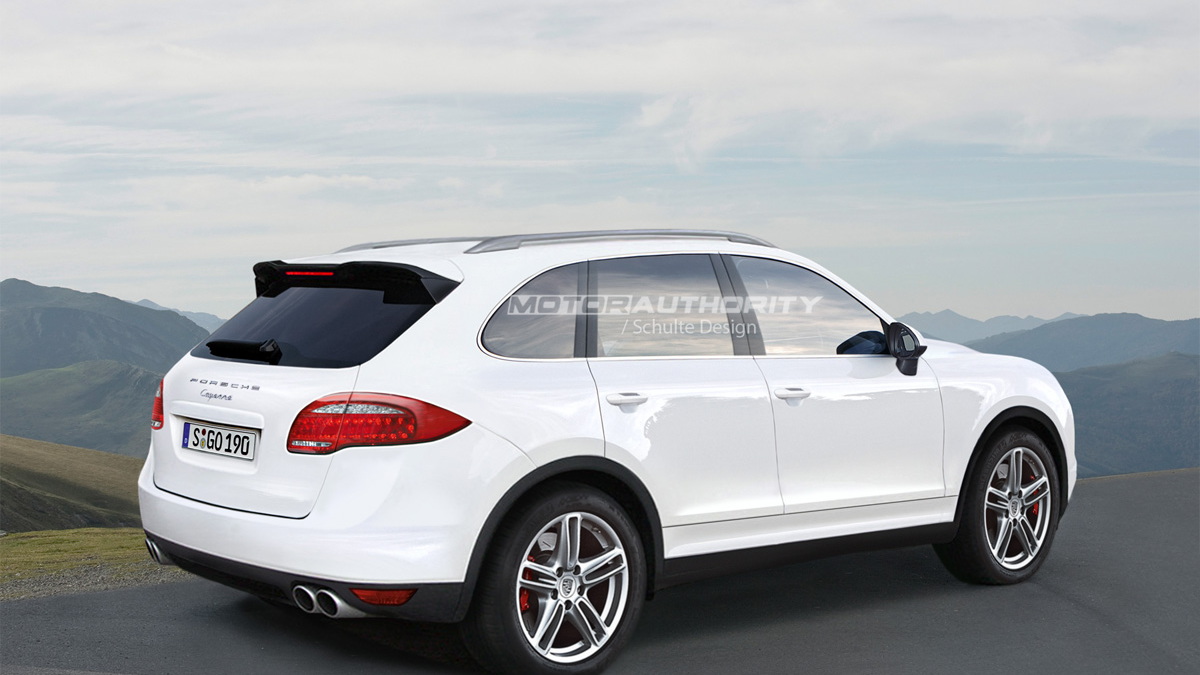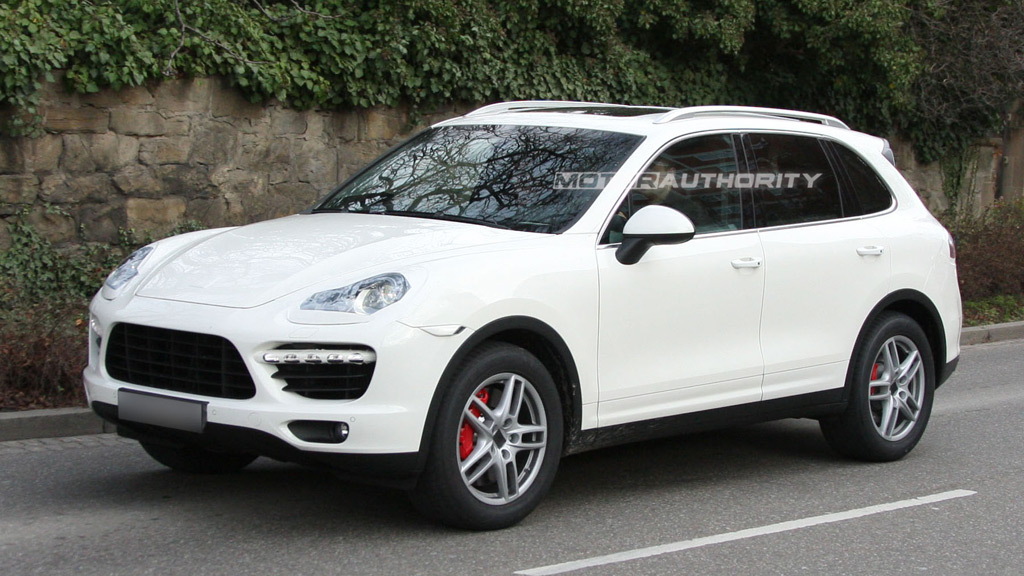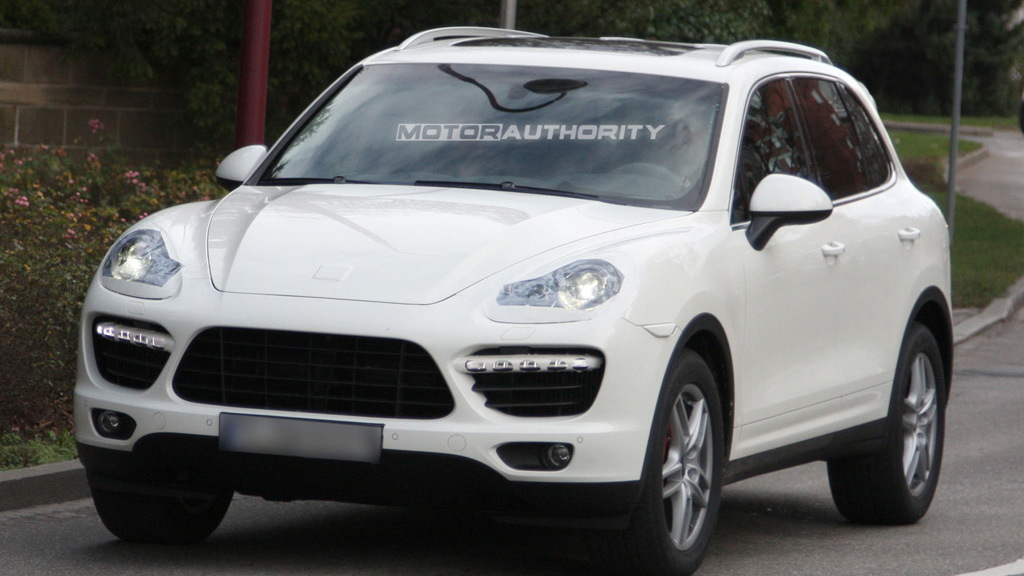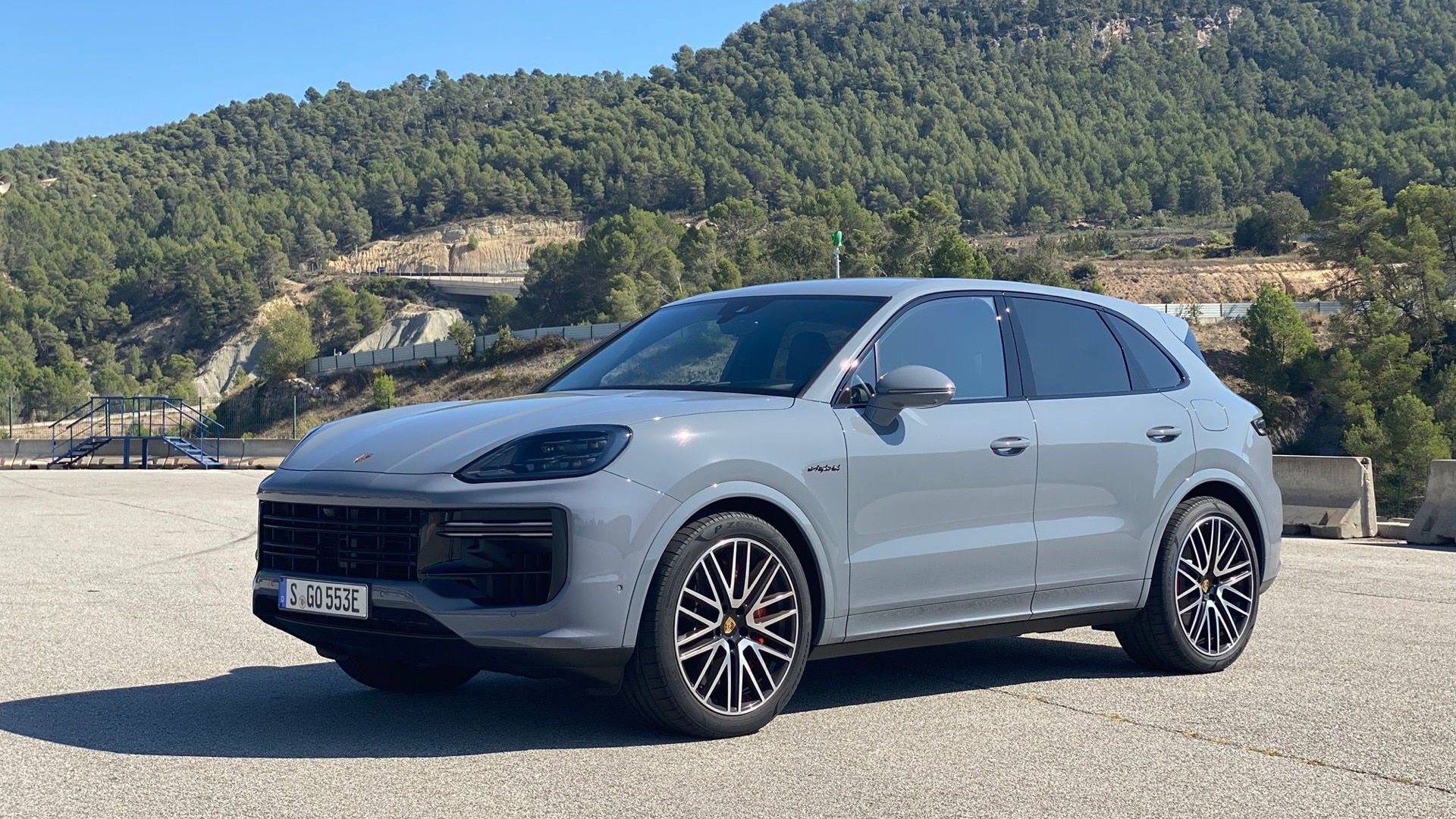Prototypes for Porsche’s next-generation Cayenne have been spotted testing in Germany on several occasions, revealing crucial details for the new SUV which is expected to go on sale by this May. Final specs for the upcoming SUV were revealed earlier this month, and now we have an updated preview look at the down-sized SUV.
We know the next Cayenne will be smaller than the current model although it will still share a common platform with the next-generation Volkswagen Touareg and Audi Q7, both of which are not expected to change significantly in size compared with current versions.
The smaller size of the new Cayenne agrees with Porsche’s desire to create a much more hardcore performance SUV than the current model, which has been criticized for being too heavy. The wheelbase will be shortened by almost two inches, while the height will be reduced by about one inch. Other details include a taller waistline and LED daytime running lights.
Like the current model, the Cayenne will be built alongside the Touareg and Q7 in Volkswagen Group’s Bratislava plant in Slovakia. Unfinished Cayennes will then be transported to Porsche’s Leipzig plant for final assembly.
Once again both V-6 and V-8 gasoline engines will be on offer, as well as a turbodiesel option and a gasoline-electric hybrid powertrain to be shared with the Panamera sedan. Power will increase across the range over the current model’s levels but emissions and fuel-economy will be improved.
The new SUV will feature three engine options to start: a 3.6-liter V-6 with 300-horsepower for the entry-level model, a naturally aspirated 4.8-liter V-8 with 400-horsepower at the mid-range, and a twin-turbocharged 4.8-liter V-8 with 500-horsepower at the top.
The Cayenne Diesel will also return, this time with a new 240-horsepower 3.0-liter V-6 turbodiesel engine. The greener Cayenne will be followed by the long-awaited hybrid version, which uses a supercharged 330-horsepower 3.0-liter gasoline V-6 combined with a 47-horsepower electric motor powered by lithium-ion batteries. Neither the diesel nor the hybrid are expected to make it to the U.S. anytime soon, however. Non-U.S. models will also get a stop-start system to further improve fuel economy. The system isn't likely to be offered in the U.S. until EPA testing methods are modified to measure the system's benefit--without bigger mpg numbers, there's no justification for the added cost.
Each Cayenne will be offered with an 8-speed automatic transmission as standard but a low-speed transfer case will no longer be offered, thus making the 2011 Porsche Cayenne strictly an on-road vehicle. The 2011 Porsche Cayenne S is expected to tip the scales at 4,553-pounds--dropping 396 pounds from the current model, and nearly 1,000 pounds lighter than the 2010 BMW X6 M or 2010 Land Rover Range Rover Sport Supercharged. The weight savings comes from new construction processes, which includes increased use of aluminum and the aforementioned removal of the two-speed transfer case.
Look out for a world debut at the 2010 Geneva Motor Show in March.
